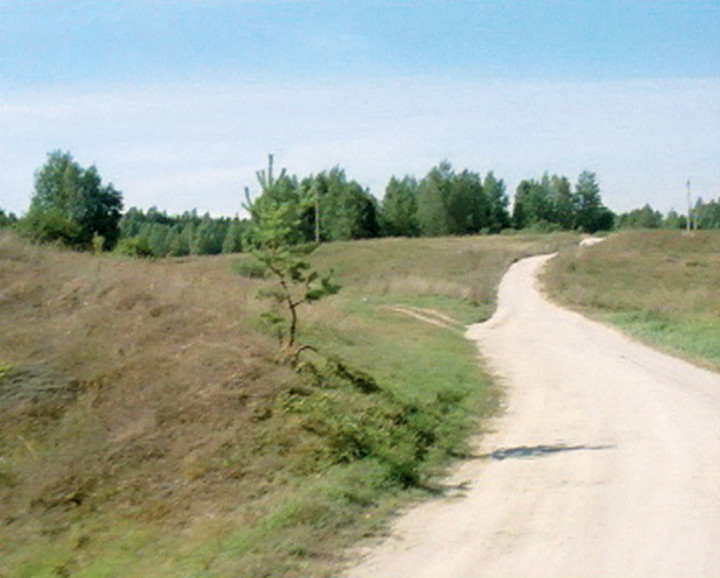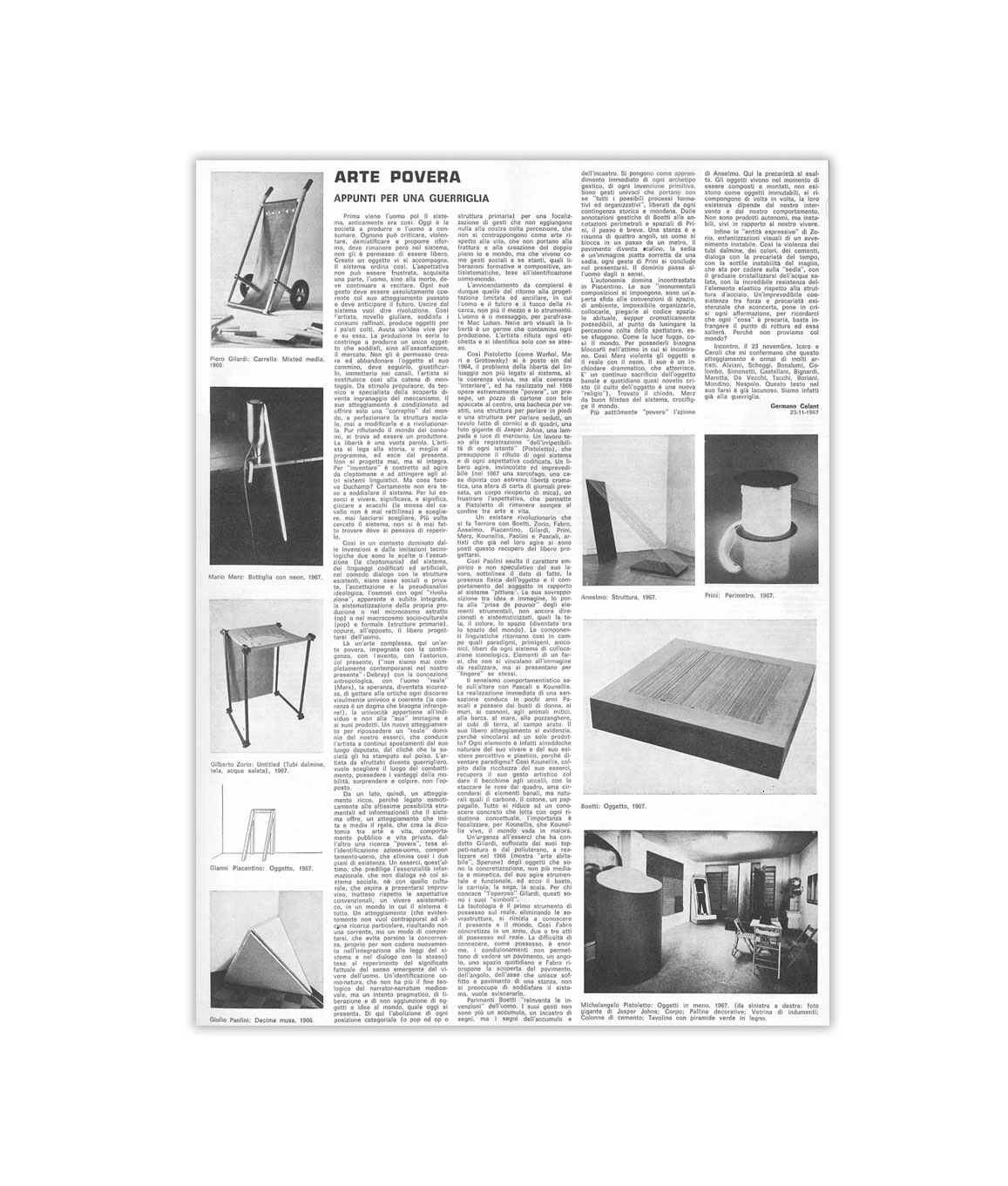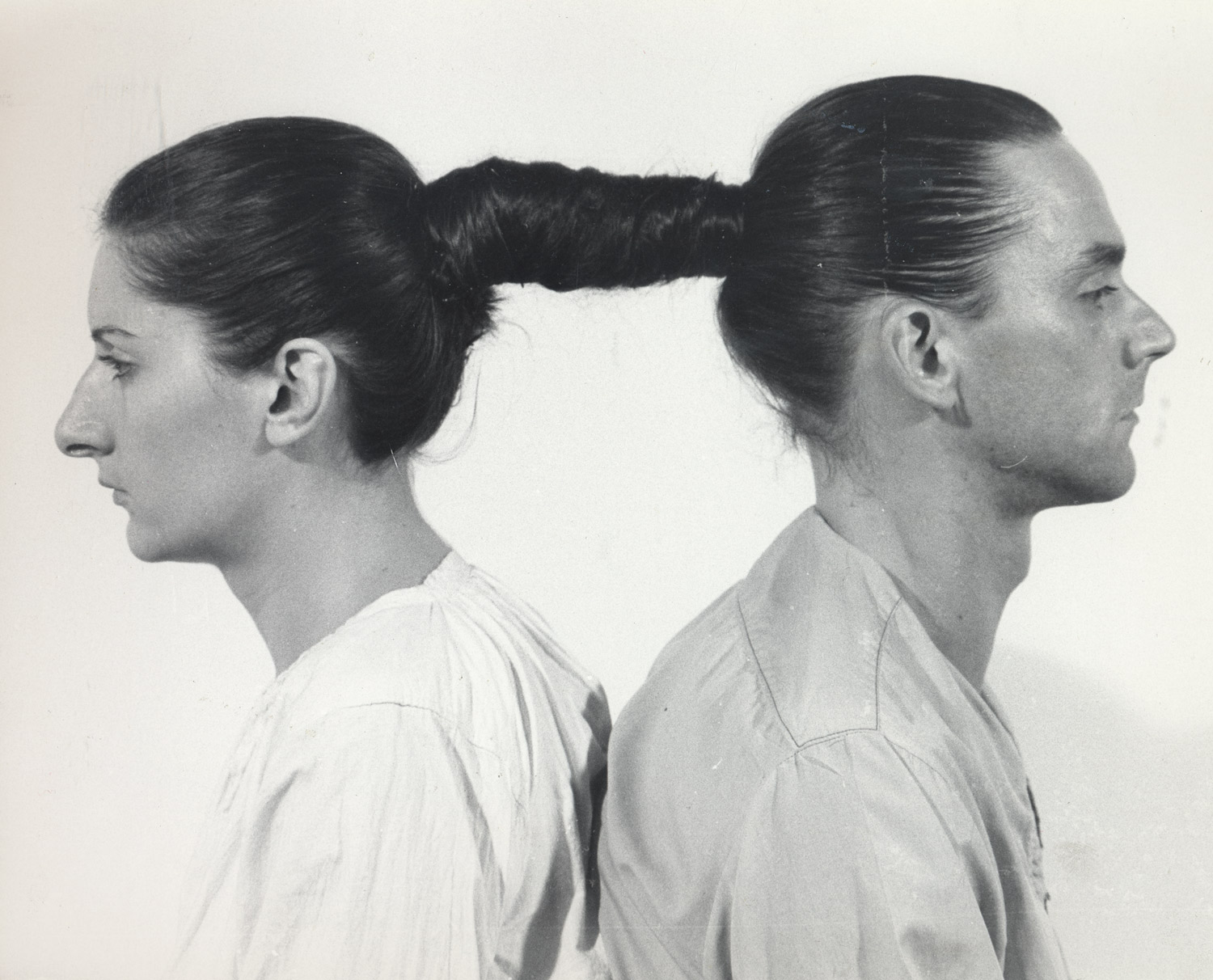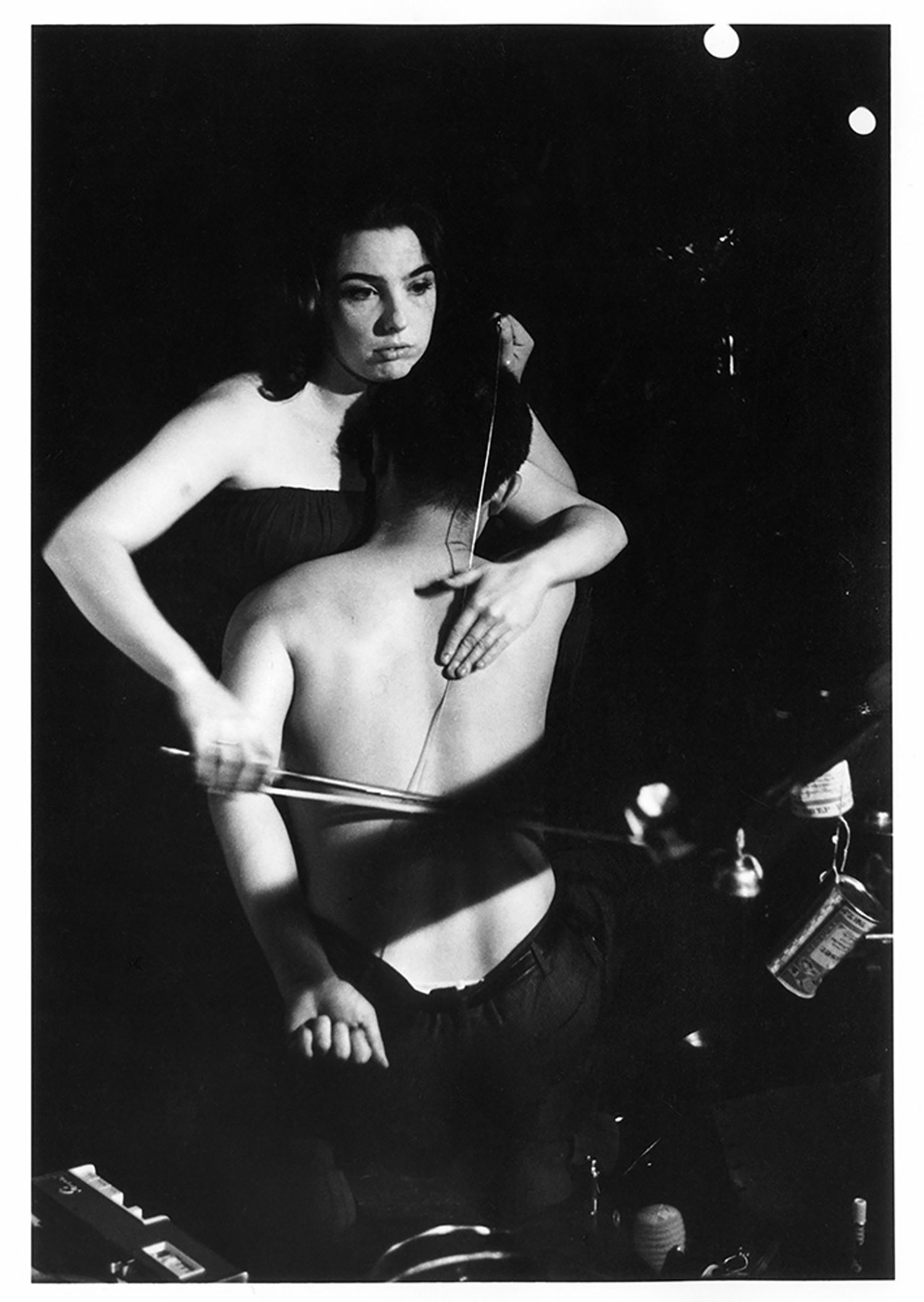
Hans Ulrich Obrist: My first question is about your beginnings — where did your work start and how did you become an artist?
Deimantas Narkevicius: I became an artist very early on, and this was because of my parents. We were living in a forest in South Lithuania and they wanted me to move to the city. I went to school in Vilnius and so was separated from my parents when I was fourteen. It was an art boarding school intended for so-called ‘talented’ people. Much later I studied at the art academy and there was always the feeling that something was not quite working. That was even before the ’90s, still in the Soviet Union. There was something impersonal in the practice of artists. At the beginning I was trying to personalize what I was doing, to motivate myself.
HUO: Could tell me about the origins of your work with film and the context in which this work was born?
DN: I graduated from the art academy as a sculptor. I was not concerned about what was going on in the art academy in Vilnius. I had a chance to go to London for just one year, in 1992. Coming back I was very much interested in site-specific objects, the places where objects are placed. But somehow it was not enough. I really needed things to tell. So I started to do interviews.
HUO: Recordings of interviews with people in the street?
DN: Just recordings of conversations. Then I found it a really perfect medium for narrative, for exploring sound as well as visual language. For a long time, Jonas Mekas and George Maciunas…
HUO: Who are also from Lithuania…
DN: Yes, but the works of those artists didn’t have a substantial impact on the art scene in Lithuania. Also the relationship to film was very local. In the mid-’90s, perhaps in ’96, a big show of Fluxus from the United States and Germany was held at the CAC, which changed this relationship.
HUO: The book Flux Friends, edited by Jonas Mekas is essentially a conversation between Jonas Mekas, George Maciunas, Yoko Ono and John Lennon. It’s very hard to edit the interview, so it leads to a montage. It is almost a new medium, a new literary category, which is the montage book — not unlike the montage film. It prefers to avoid the linear in favor of an informed assemblage of archives, interviews, texts, extracts from newspapers, and so on, using all styles from the cinema — flashbacks, ellipses, sequence, or the insert. You mentioned that your filmic works start with interviews, so there are perhaps some similarities with Jonas Mekas.
DN: With Jonas’s films, it’s not that I just put a tape in a VHS player and watch it. Just seeing it on a monitor already means a lot for me. Mekas and Maciunas were very important, and they led me to thinking about the nature of being an artist.
HUO: Since the beginning, your films have been about different narrative structures. I wondered if certain filmmakers had influenced you, or whether it was something that came less from cinema and more from your work with sculpture and painting? You continue to do installations and sculptural work, though your most recent work is influenced by film.
DN: In term of film influences, I would say that I wasn’t really influenced as such, but something that was significant for me was the documentary material on the 16mm film that we used to have on TV in the ’70s. Interviews used to be filmed with 16mm cameras, and then they were processed and made ready for the evening news on the same day. So it was often done in quite a rush. This rush provoked considerable experimentation. These films were screened and then broadcast, raising interesting possibilities for using film. I didn’t think about this until much later.
HUO: So this was before television became a more homogenized medium?
DN: Probably, yes. In terms of filmmakers, well, I don’t know. I was talking to a friend a few days ago and we were asking about each other’s favorite films. I posed the question: “what is the earliest film that you remember?” For me, that was probably the second part of Ivan Grozny by Eisenstein, especially the end. I remember that I was five years old when I saw it, and it was really shocking for me. A few years later, I saw his Bronenosec Potëmkin. These were very early things I remembered.
HUO: And what was it that struck you about Eisenstein?
DN: I couldn’t really say. If you remember the end of the second part of Ivan Grozny, it’s a kind of weird wild dancing, and other suggestive performances. This strangeness, moving out of everyday normality, and in particular moving out of history, gave a sense that there are many possibilities for transformation.
HUO: In terms of the postmedium condition, Rosalind Krauss describes the idea that artists have different media, and so with Ed Ruscha, the medium he uses is not necessarily painting, but rather the car. Or with Dan Graham, it’s not sculpture or installation, but rather it’s architecture. What would you say your medium is, and could you elaborate on your recent remark that your previous film was more about painting and that your new film is more about sculpture?
DN: I think my film is sort of an extension of my sculpture. For Manifesta 2, I made an installation using films. These films dealt with space. The projectors were equally important. In terms of painting and sculpture, Energy Lithuania (2000) is an ongoing image like a painting. Even the Super-8 colors are not documentation: they don’t have much relation to actual colors. It’s difficult to transform a visual language into a spoken narrative! When I was making the film I was thinking of it as a documentary, but the connections with painting very much emerged during the editing process. The documentary element of the film became more distanced. Painting itself cannot really be a documentary. I brought painterly subjectivity into the documentary, meaning that really it was no longer a documentary. With a new film, I’m trying hard to engage myself in totally new situations.
HUO: How far do you plan a film, and how far do chance, randomness, and the unexpected enter the process of making a film?
DN: It’s probably like making a sculpture, though not in the sense of modeling objects. Rather it is a matter of choosing an area in which you’re going to work. It’s more like a sculpture for a specific location. Within this area that you yourself define, I start to look for a certain structure. Because of the specificity of medium, there are always things that I leave to happen in unexpected ways within the filmed objects and people.

HUO: Could you tell me about how this works in Kaimietis (2002)? You have moments of acceleration and slowness, and even animation.
DN: As with my other films, the main protagonists don’t really appear in the film. They exist through narration and through the objects in the film. Again, this is about the idea of subjective documentary. I asked the main character’s brother to make his brother’s animated portrait, which appears in the film, and this is the kind of way in which I try to involve people so that their relationship with the film is special and not neutral. It is a portrait of the main character who talks in the film but appears through the drawing as an animation. I don’t always film a portrait or a talking head, but things that are related to the person in different and more diverse ways.
HUO: You’ve said that you felt this work was related to the themes of Utopia and Dystopia. Could you tell me a little about this?
DN: Well, the narrative is about being creative or creating something. It is also about the impossibility of creativity, when creativity reaches a point where it is not fulfilling. Even if you feel that you have given everything, like the character that I just spoke about did, creativity is Utopia in a particular situation and it always reaches certain limits. It is this pushing of the self to these limits that is something that I find intriguing but cannot control. Utopia is about understanding what being creative is, and the failure of that. It’s difficult to say in a few words. Being creative with a definite target is Utopia.
HUO: Ernst Bloch once said that “something is missing.”
DN: Yes, probably, something is missing: communication not by talking about something, but in relation to something. Utopia is doing something yourself and creating yourself, coming to certain limits in a particular situation. In my film, that is the situation and that is a Utopia. The second part is about relations — personal and other.
HUO: So it’s an idea that is concerned with defining a new social contract. After ’89 Utopia as an idea became very unpopular. You lived a very specific experience in relation to the moment of ’89, so at that time there was also an anti-Utopia moment. But if we revisit Utopia today, the advantages of Utopia are that it still offers possibilities for defining a social contract, not in a totalitarian way but very much on a more human scale.
DN: My context is a country that was built on a social and political Utopia. But I grew up in the period when nobody really believed in it. The fall of the Soviet Union was at a time when people had other Utopias. These were liberal Utopias, about freedom to do what you do. These kinds of Utopia were also an illusion, and lasted only for a few years. People grew disillusioned very quickly. What kind of Utopias can be created on a human scale? That is the question and I don’t have an answer.
HUO: Do you have any unrealized projects?
DN: When I started working on each of these films, I didn’t know if I’d ever realize them.
I’ve never had any big plans that would be beyond my control, projects that I can’t do by myself or with the help of my friends. So I don’t know if I have any unrealized projects.
HUO: That’s a very anti-monumental approach to art, leading us to the insert in the local paper yesterday, which is a newspaper ‘sculpture’ about there no longer being a need for monuments. Could you tell me a little more about this?
DN: Well, it’s part of the text from the film. The character in the film gives a long monologue in which he talks of the importance of a monument, and then he says that there is no need for a monument itself. Everything around the monument is of significance, except the monument itself. And that’s interesting in relation to film in general. It’s not documenting the story or filming the story you have, it’s documenting the process of how you deal with it. That is the monument, not the object itself.
HUO: In relation to what is not there, you told me a fabulous story about Herzog…
DN: I was really amazed by his personality when I had a chance to meet him. It was just a small remark about a kiss that first appeared in his latest film. When you have filmed half a hundred films and a lot of them are about male/female relations, and when you are more than sixty years old, that gives something very special in terms of understanding time. Even a film itself has a temporal quality. But the director as an artist was above it. And that is true not only of Herzog but also of Abbas Kiarostami, when characters from one film appear in another, and stories cross over too. That’s a very important form of understanding that works against monumentality. Things appear and disappear in time: the idea of duration, even of a very long film, is very important. It leads to an understanding of the existence of parallel times.
HUO: Slowness seems to be becoming very sexy at the moment. Architects and all kinds of practitioners are preoccupied with slowness. With artists I get the impression that there is more an emphasis on duration than on slowness. We are obviously at a moment of the homogenizing forces of globalization, though not only in terms of space but also in terms of time. There seems to be a certain resistance among artists to that — Pistoletto said he has a ten-year project, resisting some of the temporal constraints often placed upon artists. I was wondering if you could talk a little about these issues of temporality, duration, and slowness?
DN: Either in New York or in Vilnius, if you say that someone is slow, you are saying that he is kind of stupid! [Laughs] It’s very important for any artist not to be frightened by duration. There are going to be different paces during different phases of your life, and it is this that leads to a sense of understanding your motivation and the work that you are making.
HUO: It’s a resistance to fragmentation.
DN: It strikes me as something significant.





